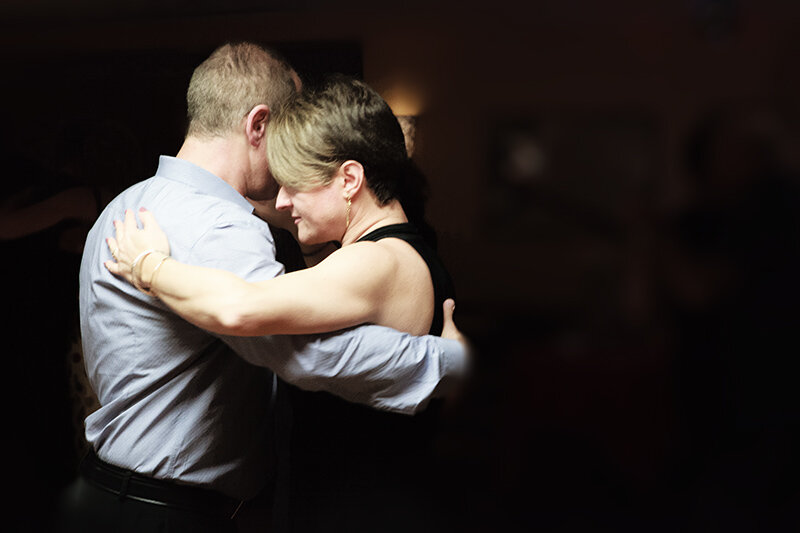Mindfulness, Meditation and Tango Dancing
“Tango contains highly addictive ingredients, such as pain, pleasure, passion, excitement, connection, freedom, torment, and bliss. In seven out of ten cases, it takes over a person's life.” Naomi Hotta, Tango Buenos Aires Festival and Dance World Cup Finalist
CARLOS COPELLO & NAOMI HOTTA, MISTERIO 2015, Prischepov TV - Tango Channel, Tango in the world, http://prisсhepov.ru, archive video, tango
Although it is common knowledge that dancing has mood-enhancing benefits, increases serotonin and cognitive functions, and reduces stress levels – this is particularly true for the combination of Tango music and partnered dancing. It delicately reveals personal emotional and physical challenges while cultivating intense awareness that has a therapeutic effect and improves people’s emotional state (Bongard & Kreutz, 2009).
Emotional and Neurohumoral Responses to Dancing Tango Argentino: The Effects of Music and Partner
The present study examines the emotional and hormonal responses to tango dancing and the specific influences of the presence of music and partner on these responses.
Twenty-two tango dancers were assessed within four conditions, in which the presence of music and a dance partner while dancing were varied in a 2 × 2 design. Before each condition and 5 minutes thereafter, participants provided salivary samples for analysis of cortisol and testosterone concentrations and completed the Positive and Negative Affect Schedule.
The data suggest that motion with a partner to music has more positive effects on emotional state than motion without music or without a partner.
Moreover, decreases of cortisol concentrations were found with the presence of music, whereas increases of testosterone levels were associated with the presence of a partner. The authors' work gives evidence of short-term positive psychobiological reactions after tango dancing and contributes to understanding the differential influence of music and partner.
MUSIC AND MEDICINE - read full text
Milonga at Ultimate Tango
The culture of Tango is iconic, mesmerizing, and an entire way of life; the community, music, lyrics, codigos, dress, femininity and masculinity, and power of self-expression. And in this hectic modern world, there is an urgent need for alternative approaches and therapies to alleviate stress, anxiety, and depression.
It’s time to explore Tango’s meditative qualities, and what it can do for your wellbeing.
Tango certainly has meditative qualities so no wonder is often called ‘a meditation for two’. Tango-ing to improve your wellbeing certainly is a right choice.
Modern Mindfulness
Mindfulness is a state of mind allowing people to observe their thoughts and feelings as transient experiences, rather than connected to the self or evidence of reality. This state involves redirecting attention away from the uncontrollable aspects of life and facilitates a detachment from negative thoughts and ruminations.
However, you can also follow Mo Gawdat suggestion, and instead of redirecting your brain's thoughts, you can let it talk, write the chatter down and analyze how valid your thoughts are. Maybe not redirection, but valid analysts are due.
Learning new physical skills can focus people’s attention on the present and produce an improvement in psychological health (Dimidjian & Linehan, 2003). In fact, dynamic physical activities may be more effective in reducing stress than static activities, such as mindfulness meditation. This is possible as, by concentrating on body posture, movement, and improvised activity, thoughts about the past and fears of the future are interrupted.
Mindful Tango
A randomized-controlled trial of Tango dancers reported that similar to meditation, it can significantly reduce depression, decrease levels of psychological stress, and enhance mindfulness, paving the way for an innovative and promising approach that is cost-effective too.
Some have suggested that the internal focus and deep concentration in the present moment that Tango – and mindfulness – demand is similar to a martial art. Tango and martial arts both involve skill acquisition, improvisation, practice, mental challenges, and observation of another person’s body. It’s not a “kick-up-your heels, let-yourself-go-completely” kind of activity, writes Tracy Picha.
Tango also requires a strong connection with a partner. Pinniger, Thorsteinsson, Brown, and McKinley (2013) point out that one of Tango’s most valuable aspects is that it allows for close, sustained contact in a safe and structured environment. The embrace promotes social interaction and a sense of security and acceptance. There’s no time for ruminating as Tango dancers have to continuously shift their focus to master different aspects of the dance; “the consciousness of walking, awareness of one’s own and partner’s body, resistance and transference of weight, and close-embrace.”
Alejandro Gee, a Tango teacher who did extensive research for his graduate thesis in psychology on Tango therapy and the effect of Tango dancing on people’s moods, writes:
"The posture of a person is not just a position...but also a reflection of who we are...The way we lead or follow [is] also a perfect reflection of our social, emotional, and mental status...This is why Tango has the capacity to heal... By fixing the physical, the mind and emotions will follow. Or we will want to heal the mind and the emotions in order to be able to improve our dancing.”
The fundamental components of mindfulness – acceptance, trust, and awareness of the present moment – are all embodied in Tango dance. In the near future, we could see mindfulness meditation and Tango, as an evolutionary art form, being effective complementary adjuncts for the treatment of depression and in stress management programs.
If reading this has made you want to test out the meditative qualities of Tango to relieve everyday stress, START YOUR TANGO JOURNEY TODAY!



